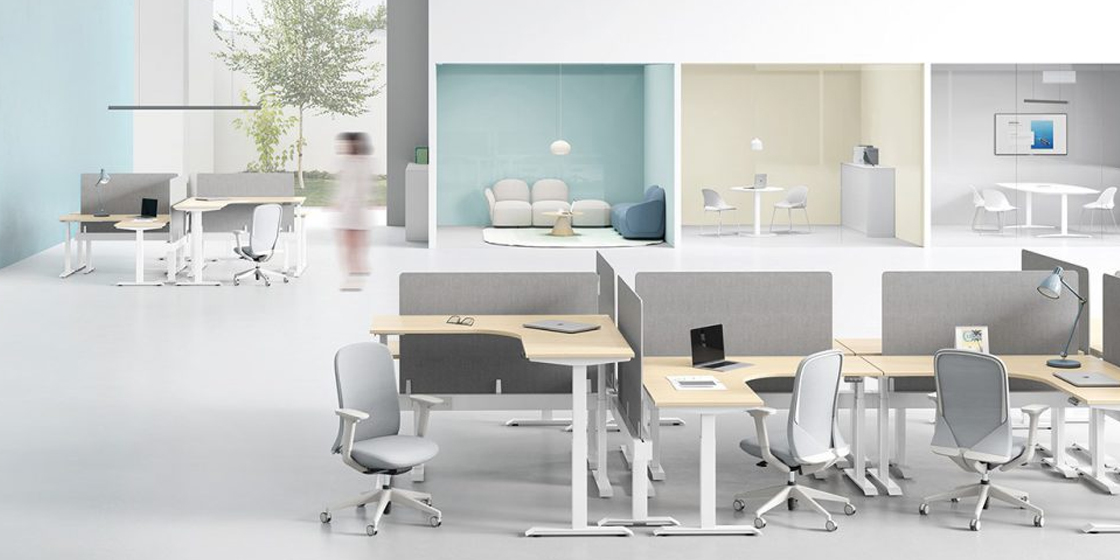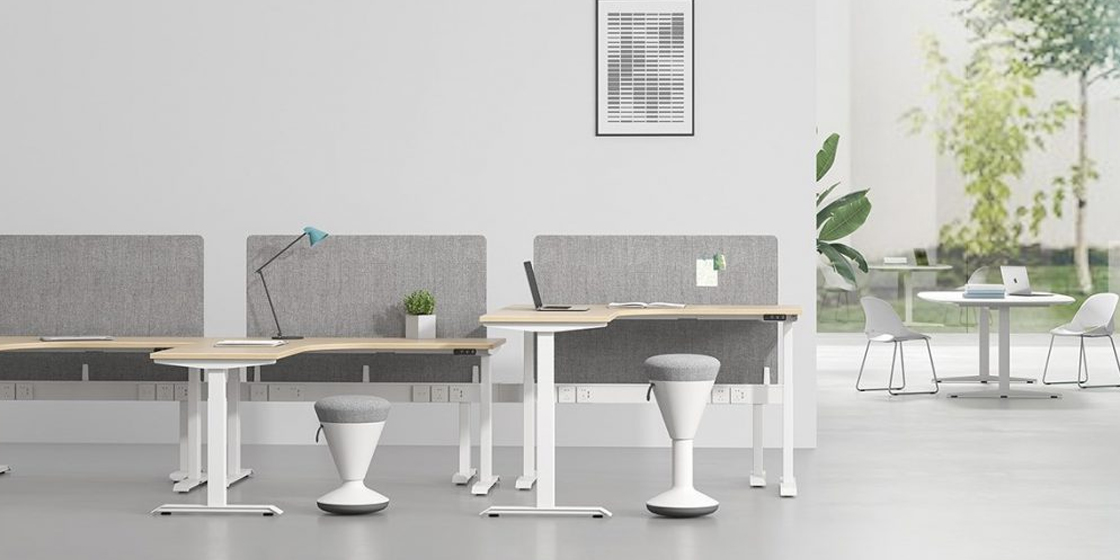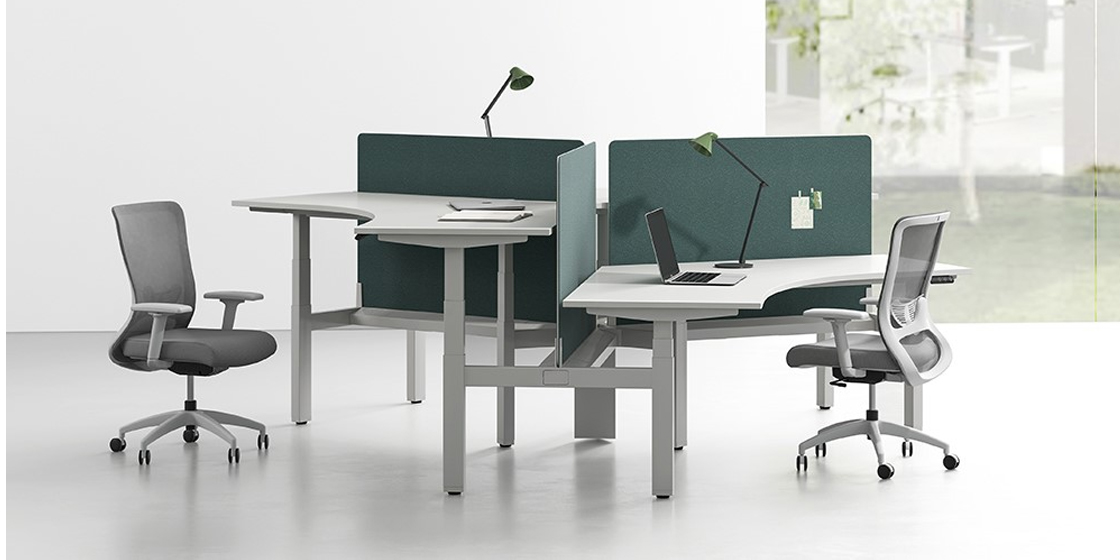
Sit-to-stand desks are somewhat of a buzzword when it comes to office furniture. Sit-stand desks have been a hot topic in workplaces and suddenly they are everywhere. Do you know just how healthy they are and the best ways to use them?
Sit-stand desks are electric desks with a height-adjustable feature so that you can stand or sit comfortably and work proficiently. They come in all shapes and sizes, just like humans, and are suitable for any employee and work environment. Quality standing desks are designed based on exhaustive ergonomic research to provide optimal workstation. Read more about the benefits and the correct way to use them to get the best results: Click here
As with any trend, myths always emerge about adverse side effects. Some people might say that the benefits of standing desks are a myth. In this article, we discover the truths behind the most common myths surrounding standing desks.

MYTH 1: I will have to stand more than I sit, to get the benefits.
This is one of the most common misconceptions about using a standing desk while you work. A standing desk is meant to give you the ability to alternate between standing and sitting. You are not expected to stand all day, but it is merely a break from sitting. Find a schedule that works for you with some light stretching in-between. You can stand when you want and sit when you want with just the touch of a button.
MYTH 2: If I stand and work, it will be harder on my body.
If you're standing correctly your back will actually feel better because of alternative standing in with sitting. Sitting and hunching over the desk will hurt your back more Standing desks provide the option to stand and work instead of sitting hunched over at a desk for a full day. The key here is moderation – stand for as long as is comfortable and makes sense for you. Simply cutting the amount of time you're sitting at your desk by approximately two hours can make a difference.
MYTH 3: Standing and working will require more energy and cause fatigue.
This could not be far from the truth. It seems like standing would be more tiring for the human body than sitting all day. On the contrary, you will actually get more energy from standing. You'll be more focused. You'll be less distracted. The actuality is that alternating between sitting and standing gives your body a boost of energy. Combined with active breaks and stretching, standing will not cause fatigue but increase concentration and productivity.

MYTH 4: Standing desks and sit-stand desks have the same benefits.
As we are not meant to sit all day, we are also not meant to stand all day. Standing desks should be used for a shorter period of time, which can be used as a shared space by a team. For a workstation, a sit-stand desk is always a better option. And keep in mind, some jobs are better performed seated. Our body also needs activity and breaks from a sedentary lifestyle. Standing desks might be cheaper but not preferable when compared to sit-stand desks.
MYTH 5: Sit-stand desks won't help me get more movement
While taking an interest to be more active and move, depends entirely on the user but sit-stand desks do help you. Even if you're just standing still at your computer desk you'll constantly be shifting your weight from one foot to another bending and straightening your legs or maybe even stretching. If you're already standing, you'll be more likely to walk a few steps and move around. Also, the act of getting up from sitting gets your body in motion.
MYTH 6: A sit-stand desk is a one-stop solution to workplace ergonomics.
There is some truth to it. Sit-stand desks can not be the only solution you need, but it is one of the most important element as far as workplace ergonomics is concerned. Sit-stand desk benefits can address everything from increased focus, better productivity, enhancing attention spans, and much more. Whether you're standing or sitting, consider the monitor, keyboard, and mouse placement as well as the chair you use. All of these items play a crucial role in healthy workplace ergonomics.

MYTH 7: Sit-stand desks are very expensive.
Facts are facts. If we compare the cost of a traditional workstation desk with a sit-stand desk, then the latter will always be more expensive in monetary terms. However, if you factor in the long-term benefits, then Sit-stand desks will be a more worthy investment. For one, health and wellbeing will increase, and you will notice less sick days that affect production. Also, happier employees are more likely to do a better job and improve your business.
The Conclusion
In the 21st century, offices, employees, and needs come in all different forms. The "one size fits all" desk doesn't work the way it used to, and businesses are realizing the advantages of an active furniture and sit-stand desks in the office. They are a great way to increase productivity and health in the workspace. But, it needs to be known that Sit-stand desks require a lot more ergonomic awareness than traditional workstations. So, it is important to look into this, before purchasing and using one.

Now that you know the truths behind some of the most common misconceptions, learn more about our new and upgraded sit-stand desk: UP1